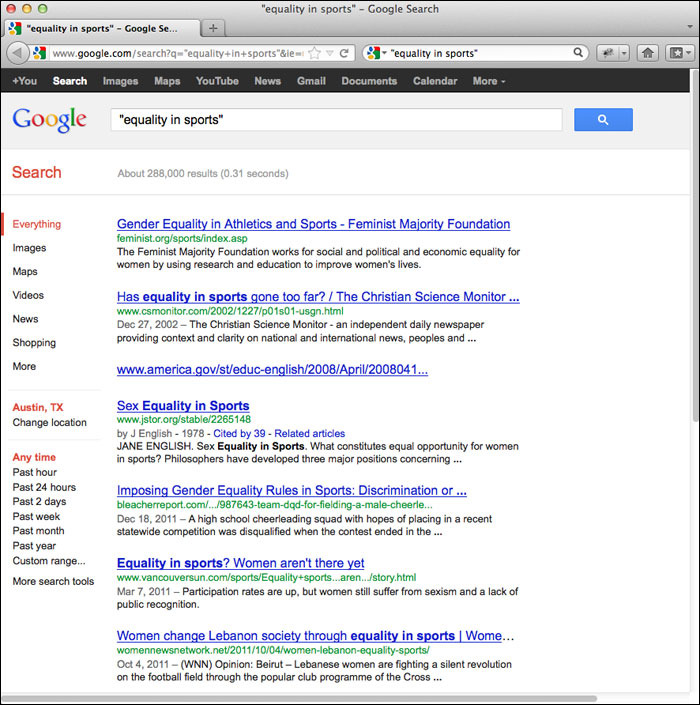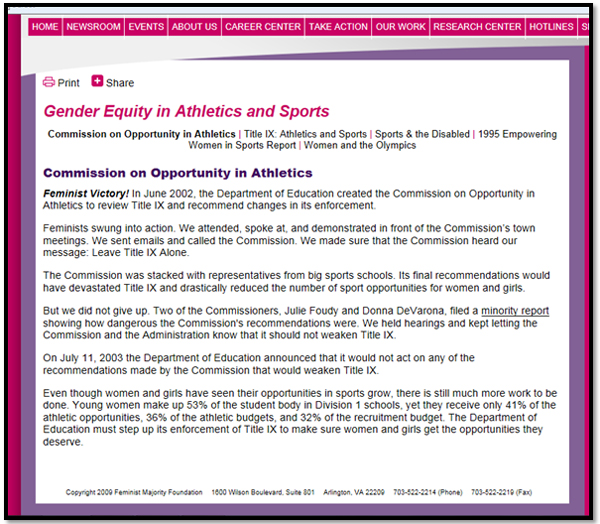You are probably familiar with searching for information on the World Wide Web. Most students use Google or Yahoo as their primary search engines to get initial information about topics. Understanding the search results will help you find the best sources to begin your research. Each web address or URL ends with an abbreviation, and knowing what these abbreviations mean may help you understand a website’s purpose.

Commercial–product information and sales; personal sites; some combinations of products and information, such as World Book Online

Education–information about schools, courses, campus life, and research projects; students’ and teachers’ personal sites

United States government–official sites of the White House, NASA, the FBI, and other government agencies

Organization–charities, libraries, and other nonprofits; political parties

Network–product information and sales; organizational sites; some personal sites

United States military–official site of the Army, Navy, Air Force, and Marines, as well as the Department of Defense and related agencies
Let’s look at some websites and their abbreviations. If we use Google and type in “women in men’s sports,” look at what websites are listed in the results.

For the exercise below, reference the Google search results in the graphic above and answer each question that follows. Click the box beside the answer you think is correct.
- About how many total results were found by Google?
- How many different types of web abbreviations are listed in the Google search results?
- What type of website is roadrunnersports?
- Which of the above articles is probably NOT going to be as useful?
This brings us to the next part of searching the Internet for sources. What if your search results are not what you need? Here are some tips to help you refine searches to get the best results possible:
- Be specific. Instead of “sports,” try “equality in sports.” Look at your research questions for ideas.
- Try putting in exact phrases in quotation marks. For instance, “women playing men’s sports” will produce results that include these words in the exact order you typed them.
- Use a wildcard symbol such as asterisk. Some search engines let you replace the end of a word with an asterisk. For example, the keyword “sports*” leads to sites that contain “sports,” “athletes,” and “athletics.”
Notice what happens when we search for “equality in sports” in quotation marks.

The search results are much smaller, only 288,000 results compared to over 296 million in the first search. We also get results from a slightly broader range of organizations—.org, .net, and .com. This will help you figure out what data, facts, and ideas are best for your argument. Let’s say you choose to go to the fourth result, the feminist.org web page. Once there, if you choose to narrow your focus to gender equality in athletics and sports, you might find the page below. As you read this web page, think about what information could best support your persuasive essay. You can also download a PDF of this article.


Source: “Latvia vs. Russia Women’s Olympic Basketball – Beijing 2008”, kris krüg, Flickr
What do you think is the most valuable information on the web page? If you guessed the last two paragraphs, you’re right! The second to last paragraph provides this fact: on July 11, 2003, the Department of Education did not make any changes to Title IX that would weaken the law that requires gender equity in sports. You could use this information in your essay to show that not only do women need the opportunity to play college sports, but that Title IX federally mandates this inclusion on all college campuses in the U.S. The last paragraph provides statistics—valuable data that can be presented to support your persuasive essay. Having numbers and figures in your essay will provide the audience with a greater understanding about your topic and will demonstrate how underfunded and limited the opportunities are for female athletes.
Helpful Hint: Most teachers won’t let you use the website Wikipedia because the content can be changed by any user and may not contain accurate information when you access it. The same can be said for any blog, which is a personal web log or journal that anyone can create and post online. Always check with your teacher or instructor to find out if Wikipedia or blogs are allowable before you start to gather online sources.
Now that you have an electronic or Internet source, let’s look at two print sources.